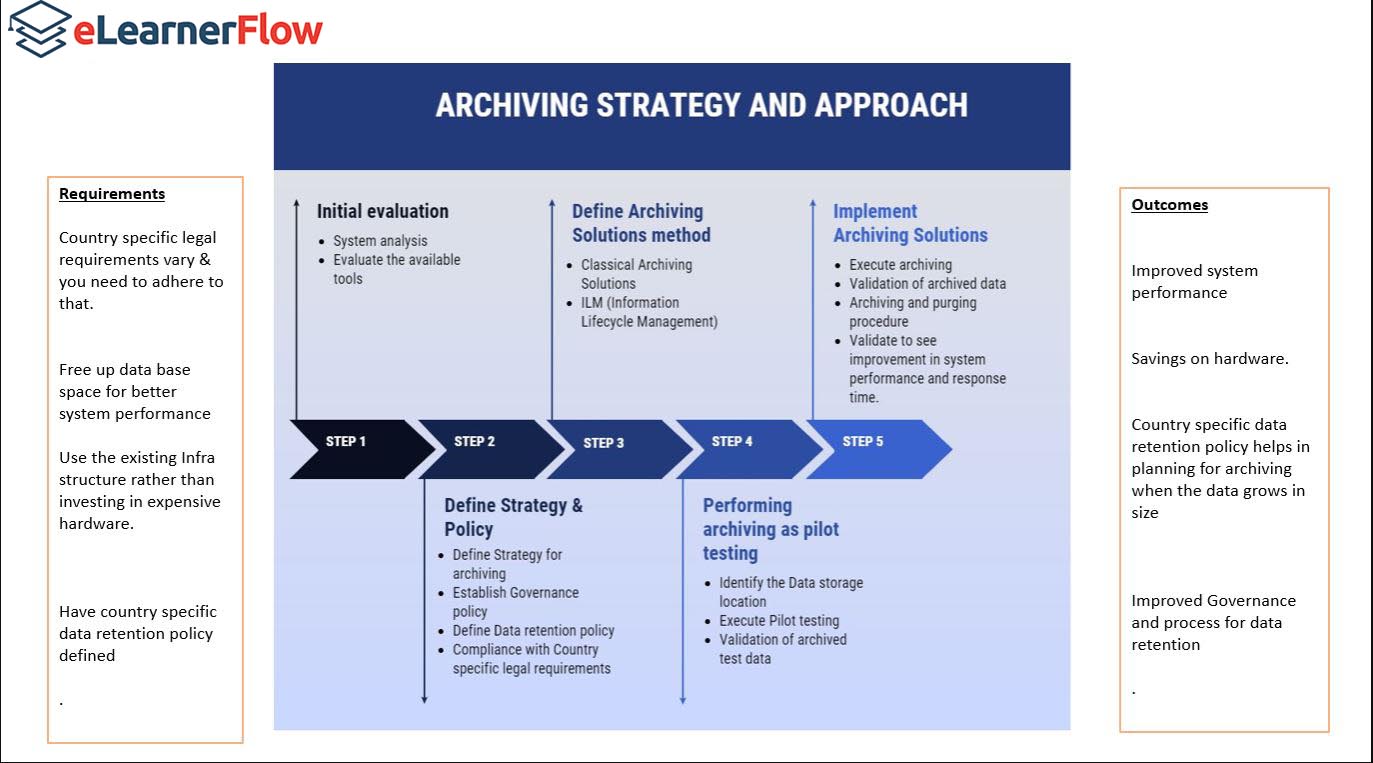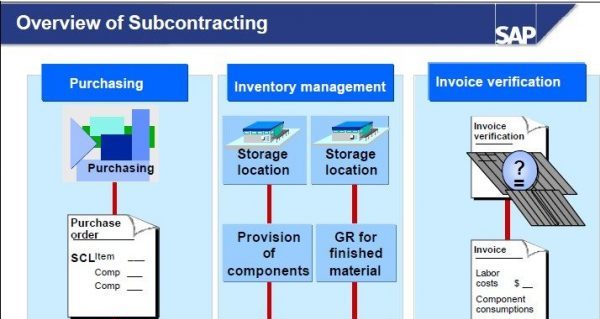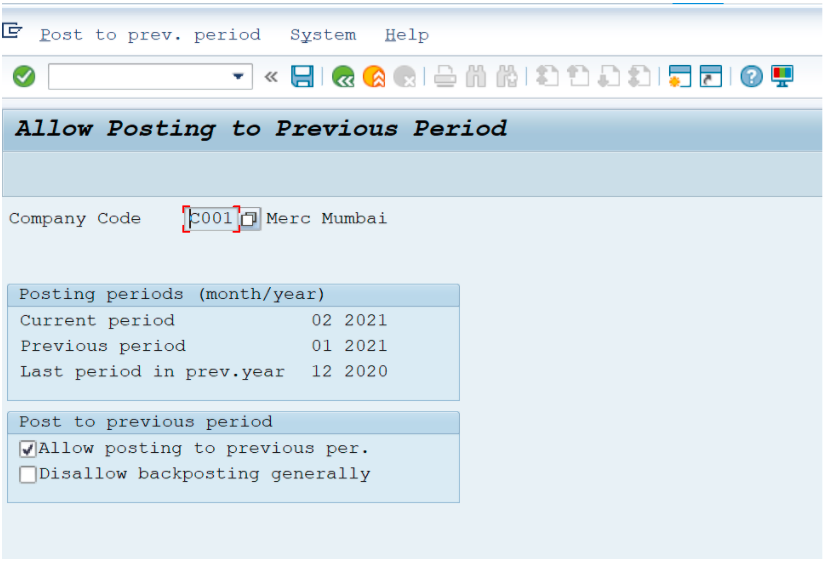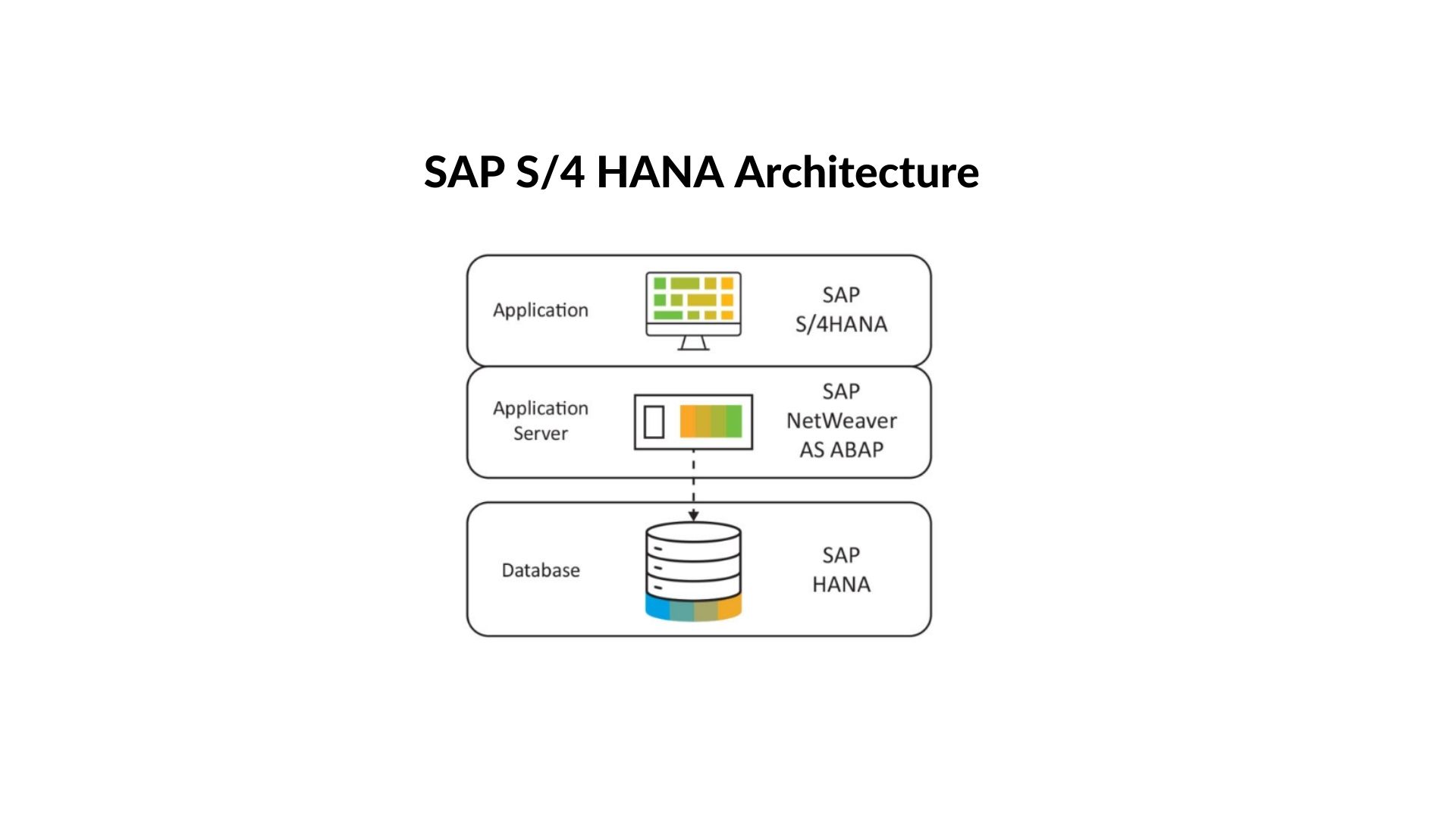In general terms SAP data archiving is the removal of completed business application data from your SAP database. Removed data is compressed and stored in archive files which can be later accessed using application reports or through an Archive Information System (SAP AS).
Archiving is a process that is associated with reading the data, copying the data and supported documents from an active SAP system and writing the data to an external file directory. This data can be retrieved at a later point of time when it is required.
SAP has suggested 2 approaches for data archiving namely
Classical archiving and Information Lifecycle Management (ILM)
My blog article is on classical data archiving.
Data Archiving is the process where in, huge volume of data is deleted from the system which has not been used for a long time. SAP recommends this process of data archiving to clean up the SAP standard tables, to improve the system performance and usability which yield to shorter response time. After implementation of SAP or any ERP for that matter, the data grows day by day, over a period of few years and depending on the kind of business the Organization is into, results in huge amount of data being generated.
As per legal compliance any organization should have last 7 years of data available readily in the system for verification or audit purpose. Data older than that can be archived. Once you decide on the old data that needs to be archived, you can plan to archive. This itself is a mini project as you need to archive the data for all the modules implemented. Data archiving is not done table by table but is done based on an object. Each object consists of predefined set of SAP database tables. When the archiving is done the data of all the relevant tables are copied and you need to write the data at a specified location. The reason why the objects are linked to multiple tables is that the data has to archived completely as per business scenario and not in bits. You have possibility of not copying all the required information that is relevant to a document if the object is not linked to predefined tables. When you delete the data, the data from all the relevant tables for each of the object gets deleted.
Why is Archiving So Important? Archiving the right data not only saves money for your business, but also adds value to your business. Archiving also reduces the volume of data on primary storage that needs to be backed up. This improves backup and restores performance while lowering secondary storage costs.
Preparation before data archiving.
Before you archive the data, there are certain steps to be performed.
For e.g. in MM module, you need to ensure that there are no open PO’s in the system for the period you want to archive. You need to review the Purchase orders and close any open quantities. In case you have a large volume of data you can do this by writing an ABAP Program.
You can search the list of archiving objects for a particular module and based on the data that you want to archive you can select the relevant objects and then perform the archive.
You can write the archive data in a separate directory. You can then check the entries in the directory to check if the data has been archived or not. Once the data is archived you can then delete the data from the system. This will help free up space in the server.
In case you need to refer to the archived data then you can access this data via a process where you can access the archived data.
The following steps need to be executed if you want to archive data.
- Preprocessing – It is the first step for preprocessing. This is an optional step and may not be available in all archiving objects.
- The rest of the steps are “Write, Delete, Read, Storage system and management”
Validation
Before archiving you can take the count of the number of records in a table using SE16N for e.g. PO header and item tables. After archiving the data and deleting the data from the tables, you can again validate to see the number of records that are available in the table. Ideally the difference between the number of records should be the number of records that got archived. You can also check on the number of records that you archived to validate if you have correctly archived the data.
Advantages of data archiving
- Improved system performance and shorter response time
- Lower hardware and administration costs
- Greater system availability or uptime
- Reduced downtime during upgrades
SAP archiving objects
SAP has provided set of predefined archiving objects that can be used for archiving. You can use function key F4 to check the drop down of the list of archiving objects.
Archiving Objects:
| Archiving Object | Description of the archiving Object |
| MM_ACCTIT | MM- Accounting interface posting data |
| MM_EBAN | Purchase Requisitions |
| MM_EKKO | Purchasing Documents |
| MM_MATBEL | Materials management: Material documents |
| MM_EINA | Purchasing Info Records |
| MM_INVBEL | Materials management: Inventory documents |
| SD_VBAK | Sales Documents |
| SD_VBRK | Billing Documents |
| SD_COND | Pricing condition records |
| RV_LIKP | Deliveries |
| FI_DOCUMNT | Financial Accounting Documents |
| FI_SL_DATA | FI Special Ledger: Totals and Line Items |
| FI_TCJ_DOC | FI Cash Journal Documents |
| EC_PCA_ITM | Profit Center Acctg: Actual and Plan Line Items |
| EC_PCA_SUM | Profit Center Accounting: Totals Records |
| CO_ITEM | CO Line Items |
| CO_TOTAL | CO Totals Records |
| CO_ECP | ECP Cost Estimates |
Data archiving roadmap
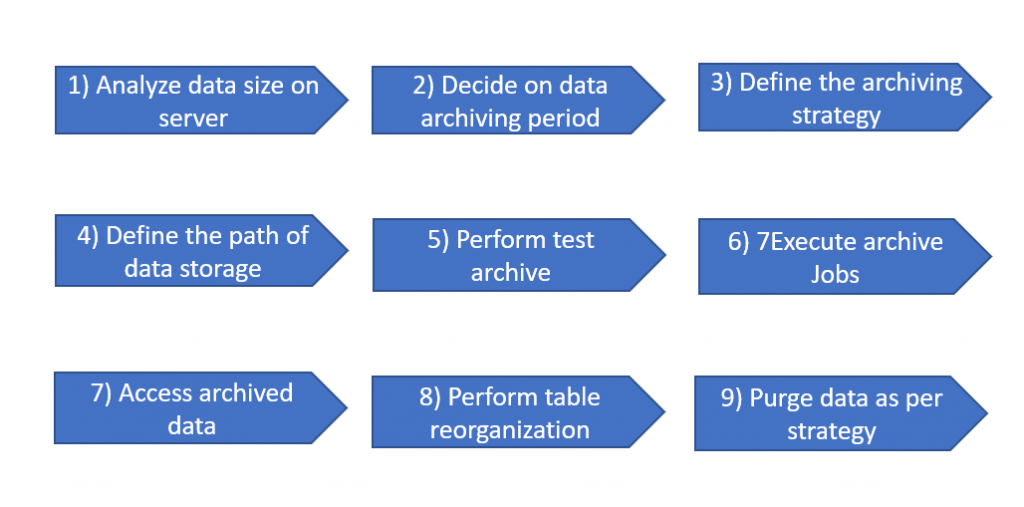
Basis Consultant – Step 1, 4, 8 and 9;
IT Manager – Step 2,
IT Manager, Functional consultants – step 3,
Functional consultants – Step 5, 6, 7
Purging is the process of freeing up space in the database or of deleting obsolete data that is not required by the system.
For Data Archiving Projects, it is always good to have a Strategy and Data Archiving approach so that you can plan well in advance and complete the data archiving successfully.
Strategy, Process flow and Approach for Data Archiving
Initial evaluation
- System analysis
- Evaluate the available tools
Define Strategy & Policy
- Define Strategy for archiving
- Establish Governance policy
- Define Data retention policy
- Compliance with Country specific legal requirements
Define Archiving Solutions method
- Classical Archiving Solutions
- ILM (Information Lifecycle Management)
Performing archiving as pilot testing
- Identify the Data storage location
- Execute Pilot testing
- Validation of archived test data
Implement Archiving Solutions
- Execute archiving
- Validation of archived data
- Archiving and purging procedure
- Validate to see improvement in system performance and response time.
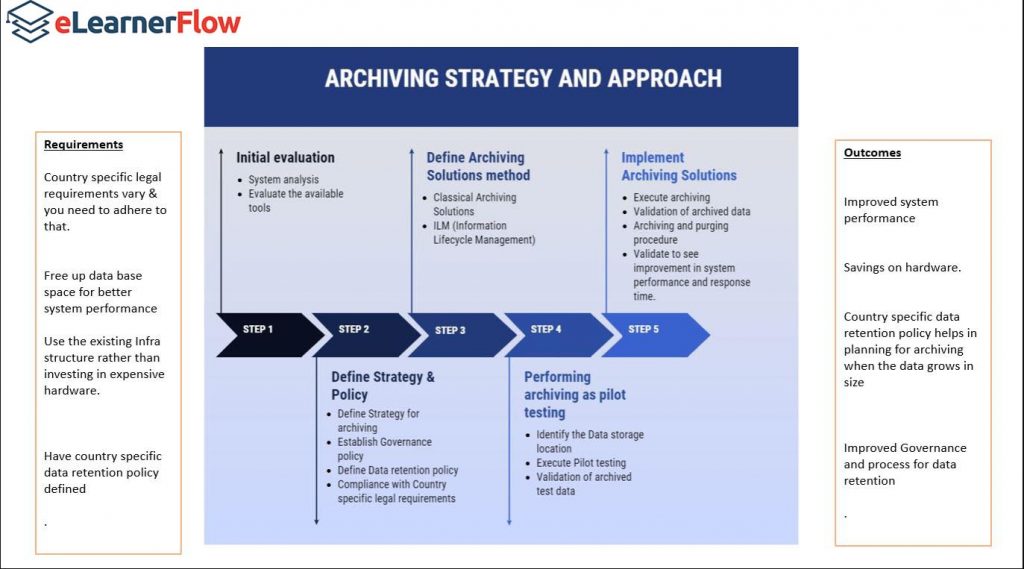
Oracle: Reorganization of the Index
If data has been archived or simply deleted and the associated tables were accessed via an index, the index should be reorganized. Deleting table entries leaves holes in the table which are still indexed. Reorganization can shorten the access paths, reducing response times.
Reloading Archived Data to the Database
At a later point in time, you may find that you need to view data from the archive (for example, for auditing purposes). For such cases, you can use a program to reload data.
Note:
Please follow me and my blog posts to get notified for many such upcoming articles


